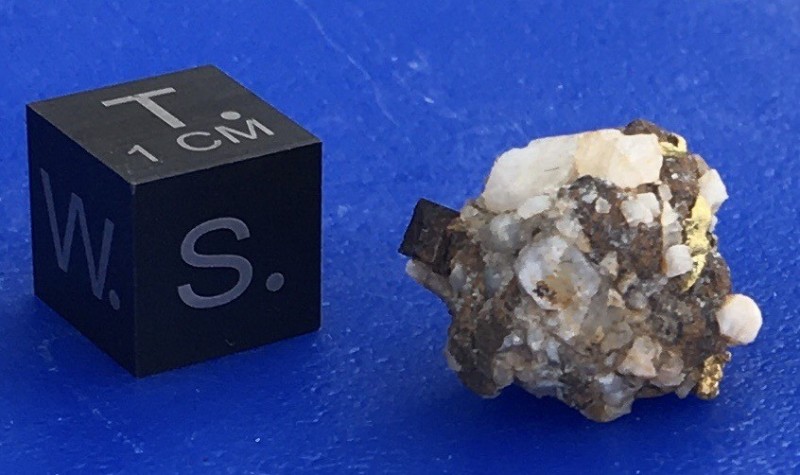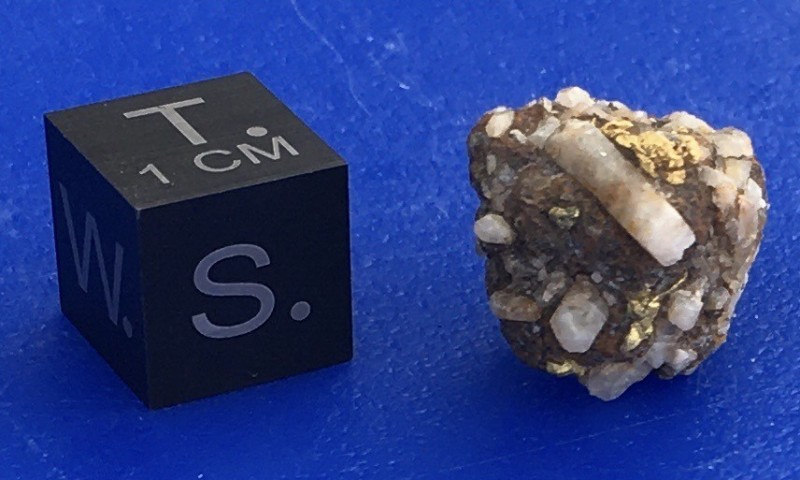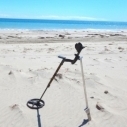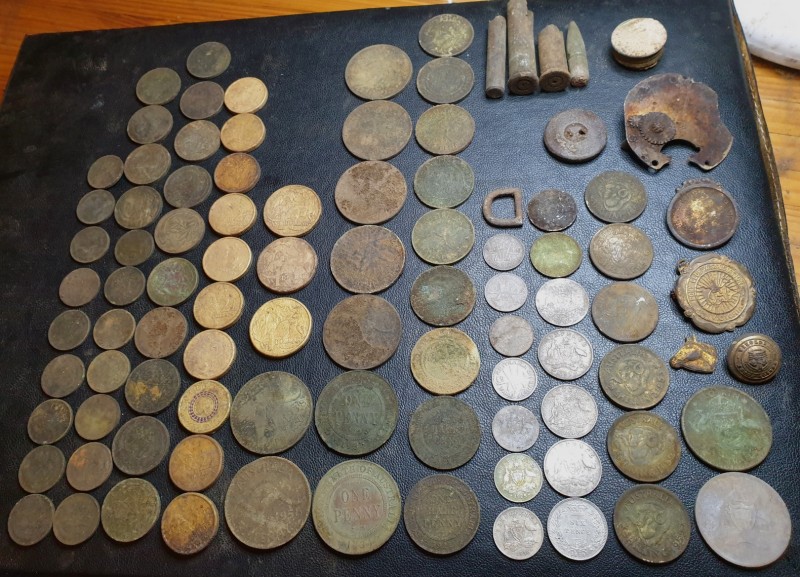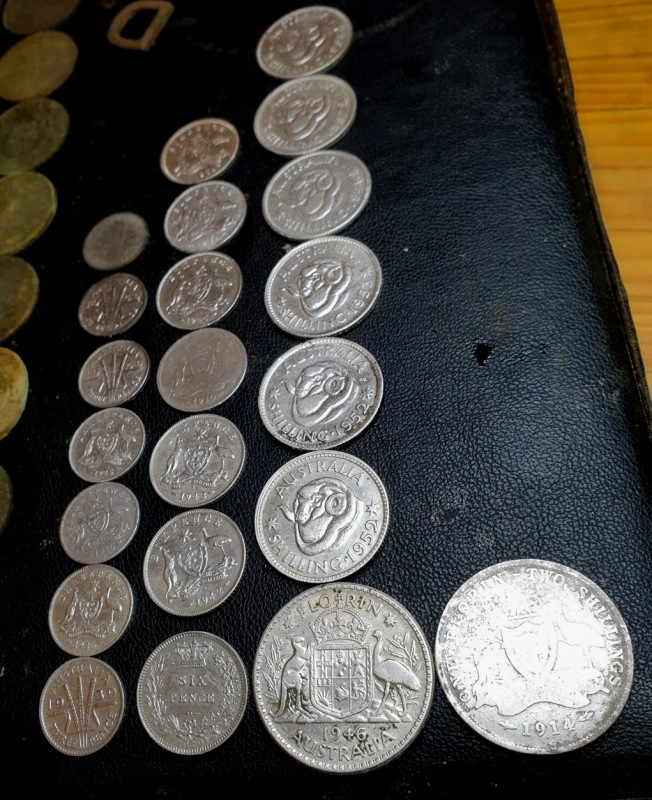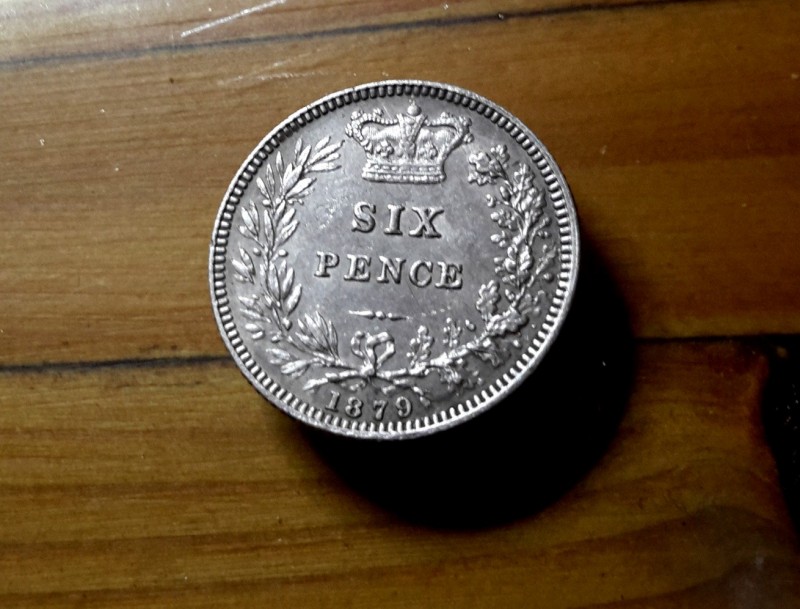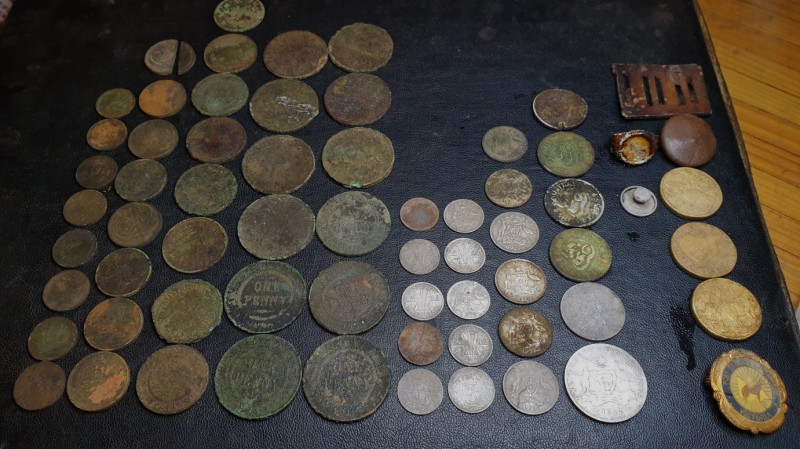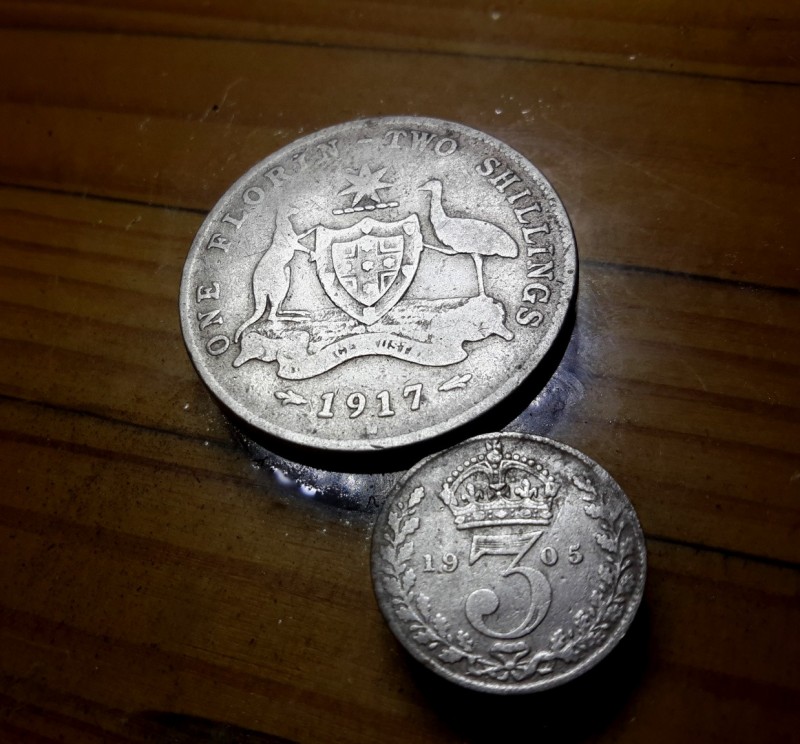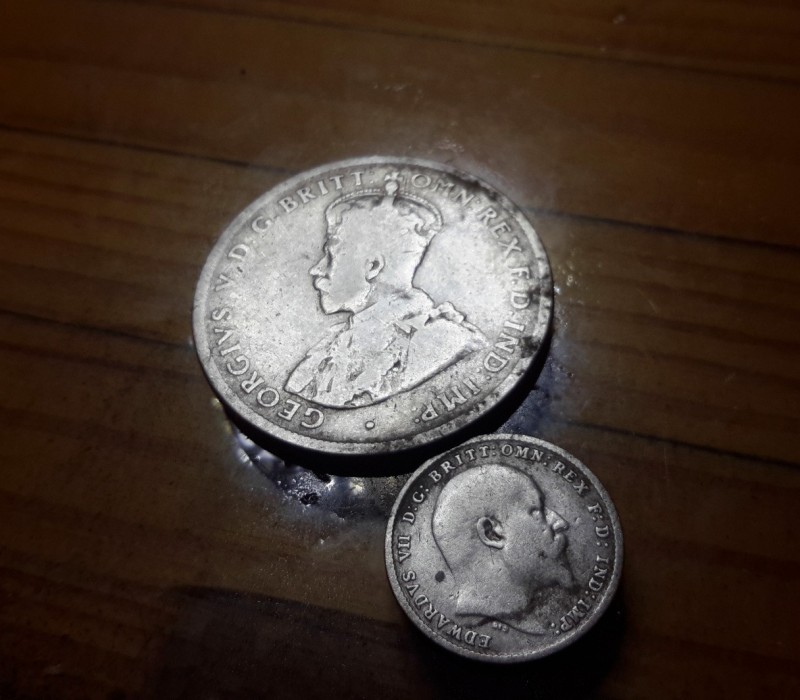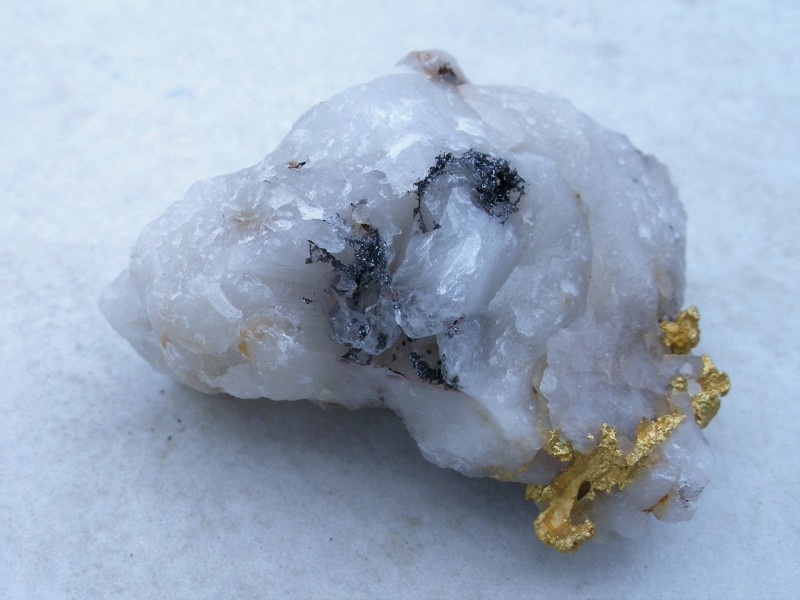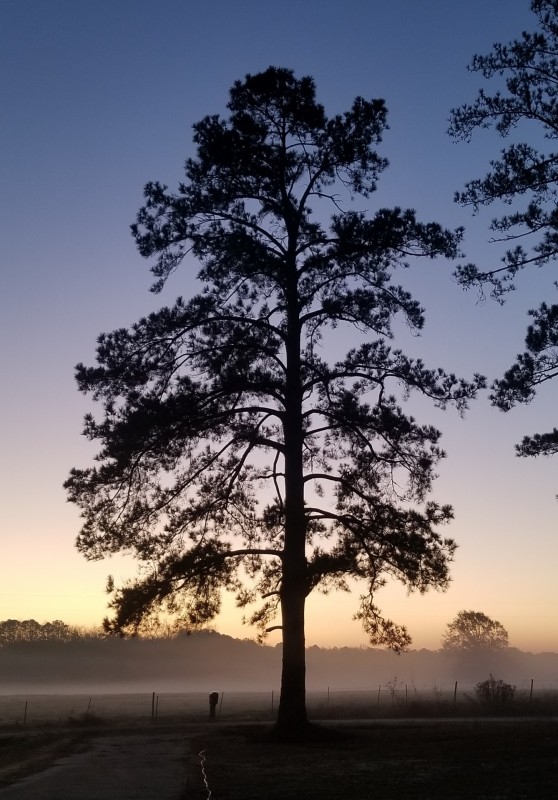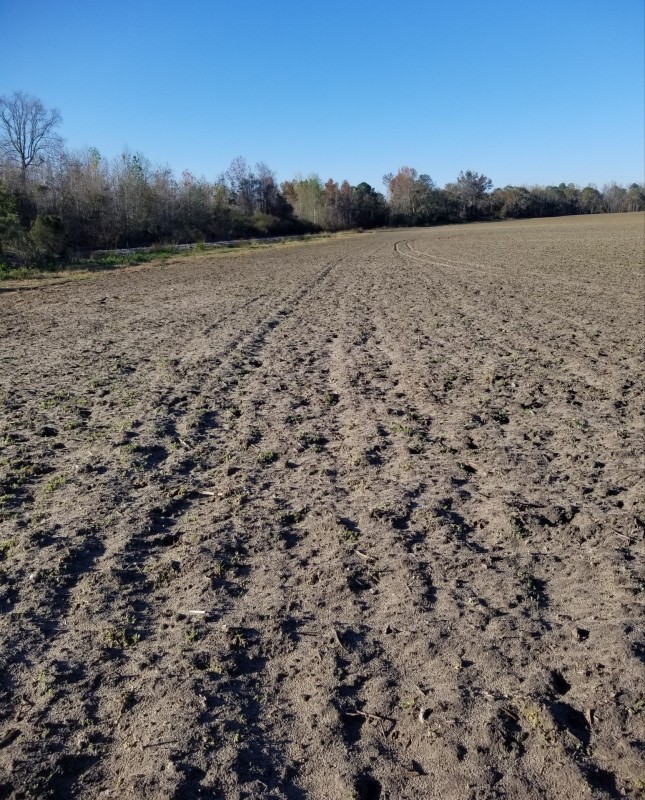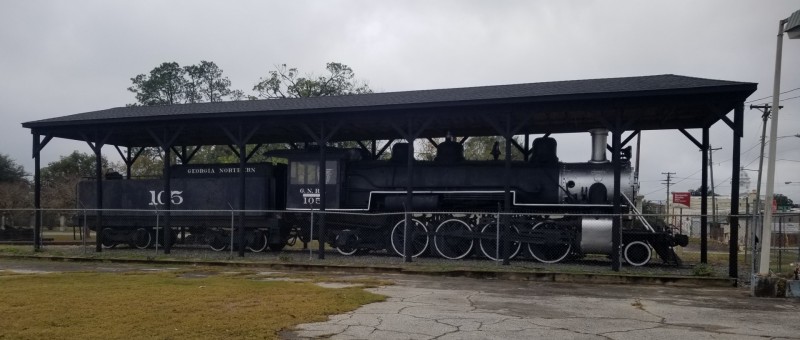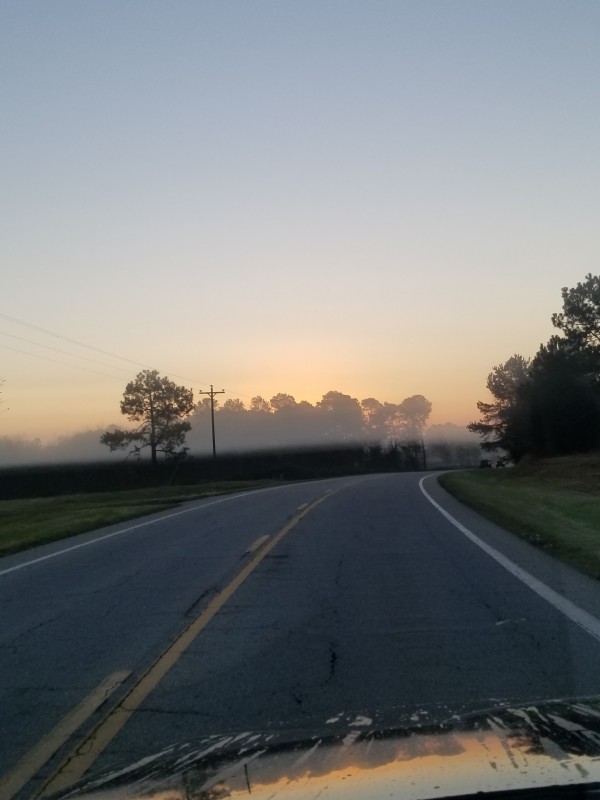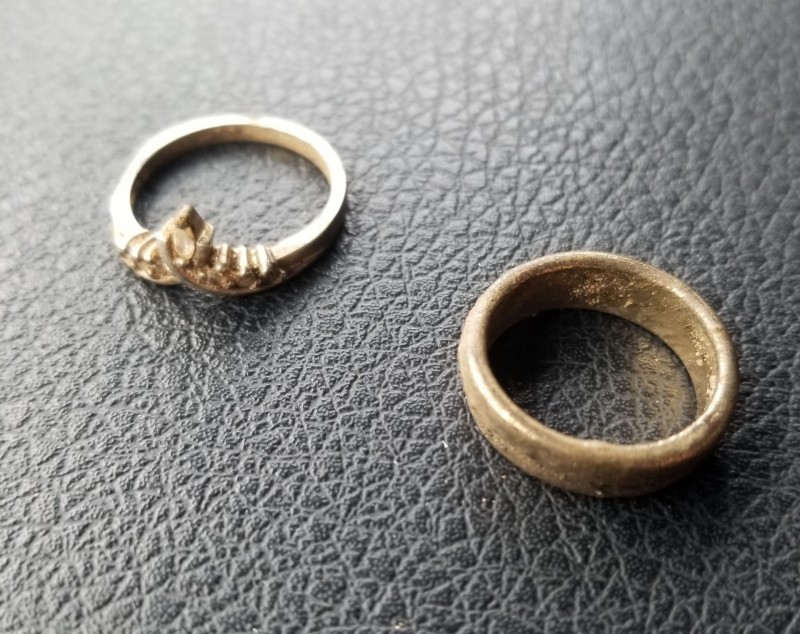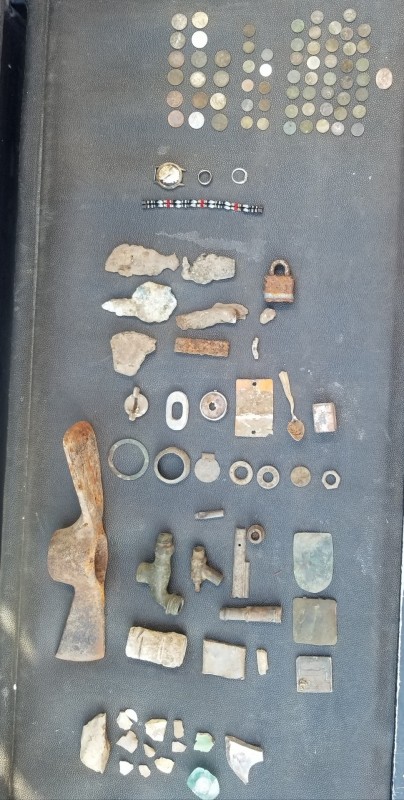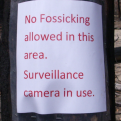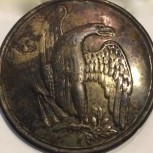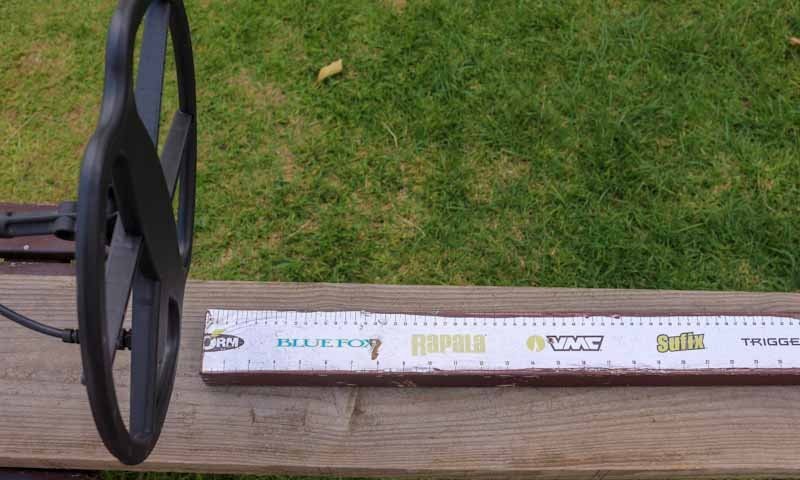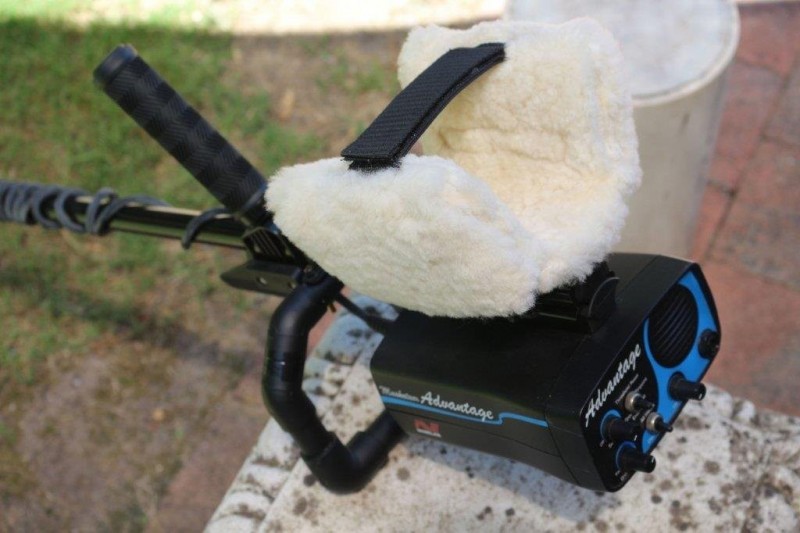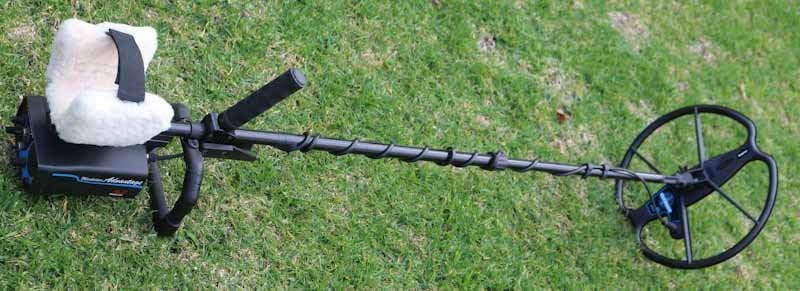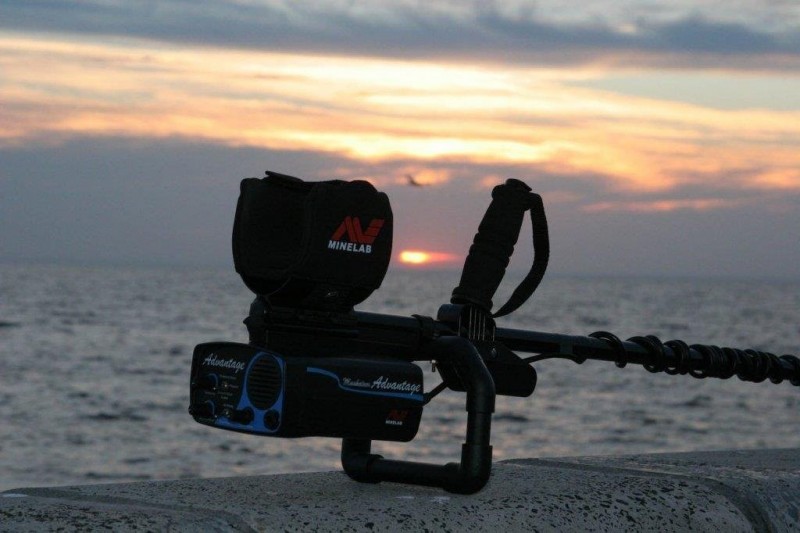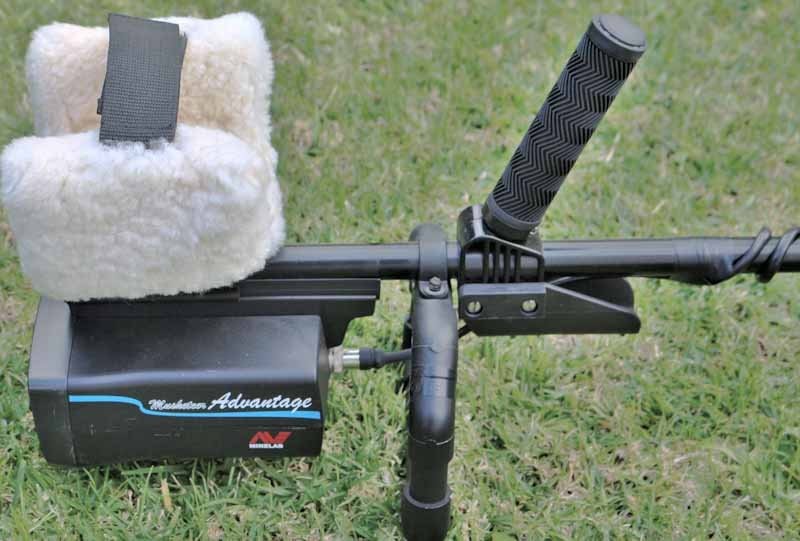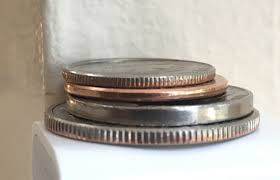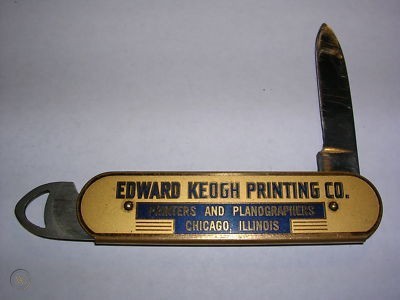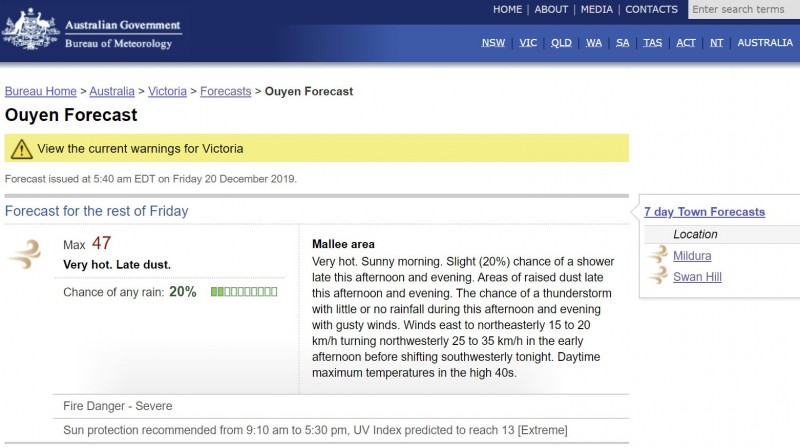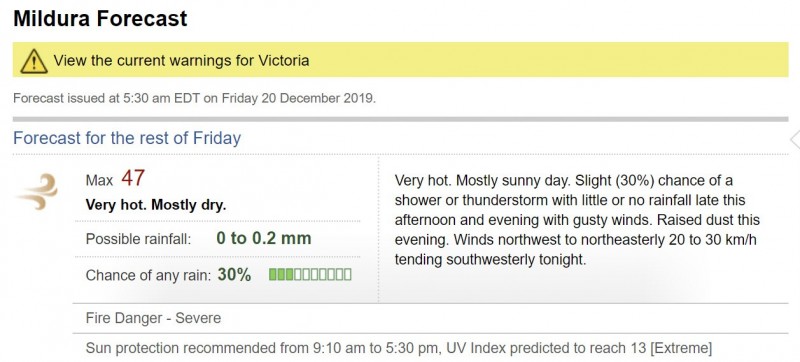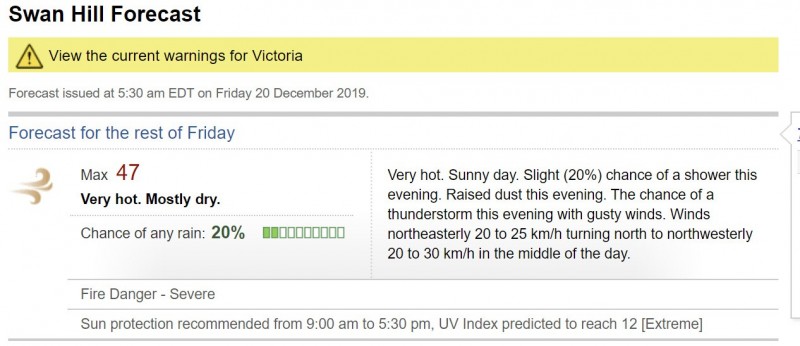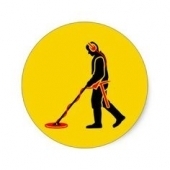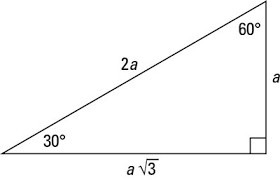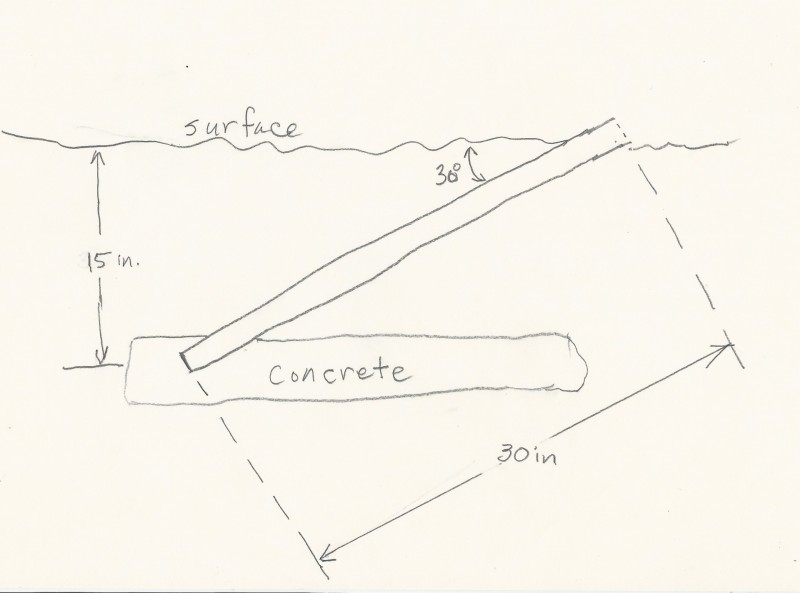Leaderboard
Popular Content
Showing content with the highest reputation on 12/20/2019 in all areas
-
OMG, really? So do you mean I shouldn't use the tagline. "When you learn to use the G Spot correctly, women will want you, and men will want to be like you." or "The "G Spot" treasure scoop... turning prospectors into something they've always wanted to be... sex objects." OK, so originally I thought of the name Gold Spot, because it just made sense, and I liked the name. But then I started calling it the G Spot, because I think we have a natural inclination to shorten words. I know the connotation, but it's not like everyone and their brother wouldn't shorten it. Not to give it a sexual connotation, it is just what people do with words. I mean we call the GPZ7000 the ZED. I can't be held responsible if you guys have a dirty mind. Besides I did a focus group with a bunch of your wives, they said it was no problem because most of you don't have a clue what it means. 😀8 points
-
On my first trip to the desert southwest 20+ years ago armed with my trusty Fisher Gold Bug 2, I looked up a nugget shooter by the name of Glen “Griz” Anderson in the Arizona outback town of Quartzsite, who was gracious enough to take me out to an old nugget patch that he and some other locals had hammered. He said if I hunted it thoroughly that I should be able to turn up a bit or two. Sure enough, careful searching with the six-inch elliptical concentric coil of my GB2 did coax a couple of crumbs out of the old patch, but other than that I wasn’t having much luck. So I decided to be adventurous and started detecting up slope away from the patch, towards the crest of a small hill. That’s where I started encountering the bird shot pellets...LOTS of them. After recovering about a dozen of them, I dug what sounded just like another, but it turned out to be a very small bit of purple quartz laced with thin stringers of gold instead.🙂 It seemed nobody had bothered to detect this area for long because of all the bird shot, but I stuck with it and for every dozen or so of the tiny lead pellets, I would find another bit of the beautiful purple quartz laced with gold, until I had a couple dozen pieces. I hunted the spot for a few days until it dried up, and I’ve been back again every time I have acquired a new detector over the intervening years, which has found me a few nuggets off of the patch, but never another bit of the purple quartz. So I was hoping to find more the other day with my White’s Goldmaster 24k, outfitted with the 6-inch round concentric coil. I was finding birdshot, but alas, no purple quartz and gold. As I pushed the coil under a very small palo verde tree, the 24k let out a healthy ZIP! declaring something definitely larger than a bird shot; I was fully expecting to see a 22 bullet or casing sitting on the surface, but could see nothing. So I raked a bit of the loose surface material into my nugget scoop, waved it over the coil and ZIP! got it! It turned out to be a small 4-gram speci with a limonite crystal, quartz crystals, and gold! I’ve never seen anything quite like it - a very unique piece.7 points
-
The second NEW ITEM - Coming soon in approximately 40 days. Doc's Nugget Stalker™ Brand, The "Gold SPOT" or "G Spot" Nugget recovery scoop/pocket gold pan. So what about a recovery scoop and a pocket gold pan in one? I promised you that I would be giving you another surprise this week. I have always loved using a recovery scoop, but it sort of aggravated me that little pieces of gold would sometimes sneak out of the scoop when I was trying to sift dirt into my hand. This aggravation has been even more exacerbated by the introduction of machines like the Gold Monster that find such dinky pieces of gold that they can surf right on top of the dirt and be easily lost. I have always advocated that when you get the target into your scoop try to agitate the dirt so the heavy gold sinks to the bottom. Well what if there was a scoop made where the bottom of the scoop was recessed a little to make it a SPOT to catch the GOLD. A Gold SPOT, Or a "G" Spot? Then what if the scoop was designed with an incline that led to three riffles of three different heights? This way when you sift the dirt out into your hand, the riffles stop the heavy gold and hold it making it easier to recover? I designed the "G" Spot so the scoop is smooth on the bottom so you can shove it in your pocket and take it out with ease. I looked at gold pans and they always form the riffles by molding them into the pan by raising the riffles on the inside of the pan by indenting the molded material on the bottom of the pan. This just causes a weak spot, and leaves crevices for dirt to collect in. This scoop is made of tough ABS plastic, the same thing they make sewer pipes out of. I weigh 170 pounds I stood on one and bounced up and down and it's solid. I am seeing whether they can tone done the shiny look as it causes too much glare. Like to work crevices? Scrape the material out of the crevice, put it in the G Spot, add a little water to the "G" Spot and you have a pocket gold pan that really works great, very fast and very convenient. I think the "G" Spot with these unique features will speed up target recovery and it's just fun to use.. I guess this is actually sort of a tease because I only have these 5 scoops. They are just the pre-production proto-types sent to me for approval. So what do you all think should I approve these to go into production? I vote yes! What do you think? Price to be determined after I know the shipping costs, duty and tariffs. I don't even want to tell you what the mold costs were for this project. My kids and grandkids really didn't need to have Christmas presents this year. LOL Doc7 points
-
Had a bit of luck detecting recently with the Deus and 9" HF coil at a country town, gathering by the result the location hadn't seen a detector before. Ended up with 44 silvers on two successive outings, plenty of predecimal coppers and a bit of petrol money to help cover costs. Most of the silvers are .925, with the odd 50% silver makng up the later dates - the green looking shillings are 50%.5 points
-
I would not use acid on a limonite crystal as it is Fe . It is great to get a three-some.(Quartz,Gold and Limonite crystal) The black crystal is what we call devils dice. My favourite three-some find is below, the silver/dark grey one is Tungsten or wolfram Tungsten has a similar Density to Gold Density 19.3 g.cm-3 at 20°C Melting point 3410 °C Boiling point 5660 °C5 points
-
My CTX had been in the shop for quite a while–it had the old config and leaked more than once. One bulkhead, one set of clips and two lithium cells later she was still drinking brine. Thanks to Minelab I’ve just gotten a like new machine and am very excited and grateful. (This must be what it’s like to complete a jihad and be granted a virgin in the afterlife)! Anyhow, I do a lot of testing in my basement in that the interference from furnace, household panel and dryer simulate actual tough salt surf conditions. If you can tune a detector inside–you are doing something right. This is especially true of big coils. I have the large coils for my CTX, Equinox 800 and a WOT hardwired for my Blue Tubes Excal. There is a ton to be learned about signal balancing big coils under these high interference conditions. This kind of testing has gotten me a lot of deep, heavy gold in conditions where there is a lot of pro-level competition. First, its amazing how much of a difference in performance loss (even in air) there is between large and stock coils. These big coils just suck the interference out of the air (or water). What I notice is that target sounds have a much more “inverse” .sound–as if the threshold was “taking over.” The higher you turn the Gain–the quieter targets get. In some instances–the stock coil actually hits targets further out. (Talk about a “teachable moment!)” One thing that’s worked well with the CTX has been to run a P2 version of one of the programs that features one or a couple of reject lines. (Andy’s Beach for example) This seems to balance the signal and reduce all the reverberation-type noise. This works well in the field too–especially of you don’t pile on more interference from current and any incline. This involves a slow sweep speed and working only North / South. I’ve gotten some rings down at the 20″ level this way. The Excalibur–as hard to tune with the WOT coil as it can be–is a simpler platform with less going on–electronically. While it can’t be run that high–maybe at 1 to 2 o’clock is a balanced signal–it does get great depth in discriminate–taking rings at an easy 18″-plus. It’s also stable. Now the Equinox is one of the hardest detectors to tune with a big coil that I’ve used. My usual 2 Tone method works–but is unstable and gets only moderate depth. My super-sharp responding gold magnet “Undertune” (GB -9 / tone “25”) method is out of the question. Without Ground Balancing–the threshold is lilting, uneven and requires careful coil control. I’ve seen videos of guys running down at “14” Gain–unacceptable. Why bother with a big coil to run that weak of a signal? The sense I have is that this detector has a hard time supporting a coil that size. When I run near-preset B2 with 5 Tones–it seems more balanced and stable. This is about the only time I’ve ever been driven back to the pre-sets to balance a detector. It’s a good coil–but hard to balance–just saying. I see a detection signal as being kind of like an arithmetic sum. When you keep subtracting with say, fast water, Gain too high, (in this case) Recovery Speed too fast, high saline conditions bottom contours / inclines and the work a detector does with a highly processed signal like that of the CTX or EQ–what’s left is not always enough to get any more depth than the stock coil. I’m still learning with both of these detectors / coils but am really struggling to get any respectable depth–especially with the EQ. I’ve a lot of great signal balancing “tricks” up my sleeve–including smoothing out the threshold with a “1” discriminate setting or even bringing up the Tone Break–but have yet to find anything that convinces me that a narrower–more manageable detection field drawing less interference would not perform better. I’ve also been instructed on the forums to keep the Recovery Speed low–down at “4” with the big EQ coil. This is just not that stable in salt conditions unless its absolutely still. Of the two, the CTX wins in terms of stability–but for coils that size–even compared to the WOT–the depth just does not seem to be enough to justify the extra swinging effort–at least not in salt water. I’m open to Equinox big coil salt water suggestions. Otherwise–next trip–the coil at least–is staying home. cjc4 points
-
Electronic Devices Supported Scavenger thats what i consider myself :) RR4 points
-
I would personally describe myself as a semi skilled 'Metal Recycling Operative' 🤣4 points
-
I’ve actually used the Nox and the GM 1000 at this locale, both with their small coils. Must have just missed this particular spot before, as the speci was right on the surface. Happy Holidays to you. As Geof noted, I didn’t want to use any kind of acid on the limonite, so I just used a gentle scrub with a toothbrush in soapy water.3 points
-
Wow Goldpick, Your giving Simon a "run for his money"!! I just hit a few country town in Georgia, In the US! And did not get anything near like what you found! I guess everyone there is too busy detecting for gold, to bother with coins! Unlike here, where coins, and relics are the main targets! Keep up the awesome finds!,👍👍3 points
-
The condition on many of those silver coins (e.g. that 1879 sixpence) is remarkable. Great finds (the site and the coins)!3 points
-
Made my annual deer hunting trip with my 84 year father and we did very well! Only hunted evenings this year! We also do a fair amount of property maintenance, and stand relocation during the day! Dad mostly works in a supervisory role now!🤣 I detected most mornings for a couple hours each day! I sampled several new locations which included 2 parks, 2 playgrounds, 1 baseball field, and one farm field where i have sight hunted for flint and arrowheads in the past! The ball field i found both rings about 10 feet from one another on the same pass! Both signals were iffy, but i was digging most everything anyway! The one looks to be and engagement ring! Ill have to get the stones checked! The playgrounds and parks only produced modern coins! It seems that the silver and low conductors had been cheery picked, because i found no nickels, silver, or gold there! Oldest coin was 1960 D penny! The other items were older, including lead, copper, and bronze, and iron! and a few toys that were pre 1960! The farm field produced the maddock, and some flint pieces, but no arrowheads this time around! Found some of the copper and slag items on the site of an old tobacco barn on same field! But this area was heavily covered in nails, so tough hunting! I only spent a limited time at each due to time constraints! But intend to return next season to finish them off!👍👍3 points
-
It's like gold. I know what it is, I'm just never really sure I'm looking in the right place 😁3 points
-
What was the size and composition of the coin? The issue typically cropped up or could be readily demonstrated with US silver or even clad dimes on edge. Your results are unusual but frankly I think you are over thinking it. Just go with the version that gives you the most confidence in the field, as all three behave similarly when it is all said and done. Putting too much stock in controlled test garden cases will always leave you second guessing yourself as you can never perfectly emulate every real world situation you will encounter. Too many variables. Pick a version and swing with confidence.3 points
-
Nice product placement deal Garrett must have made with Duracell as the detector brand name is not obscured at all. Well played by the Garrett marketing team. Wish their engineering team was just as innovative.2 points
-
Good point. The WM08 is a great external speaker port solution if you are solely using the Equinox. Unfortunately, however, the WM08 is not universal so if I want to use the same wireless method on both my Equinox and GPX, then BT APTX LL is the way to go and that is why I mentioned the BT LL APTX receiver/transmitter module that I can plug into my GPX as a transmitter for the Equinox wireless headphones or as a wireless receiver for amplified speakers and that I can universally use with either the GPX or Equinox. The Z-Lynk will work as well, but I am trying to minimize different systems so I have pretty much settled on the BT APTX LL universe as the wireless standard for my ML detectors. And an added benefit is that BT APTX LL hardware is comparably significantly less expensive than dedicated proprietary solutions such as Z-Lynk and ML's Pro Sonic system.2 points
-
I can always tell its winter time, when conversations tend to morph to double entendres. Lol2 points
-
I was happy to get Reg posting here. Then another forum member made him angry, and for some reason he seemed to get angry at me also... I still don’t know why. He left and unfortunately has not been seen here since. I think he was on Findmall awhile after that but I stopped looking there some time ago. Long story short I hope he is well.2 points
-
I have two of Reg's mods in both my TDI's. One makes them more sensitive to small gold and the other makes for a smooth threshold ( I have always hated the warbling threshold in every other detector I have used). I can now run both the original and 2nd gen TDI's wide open on gain and have a perfectly smooth threshold. Mike2 points
-
Hello All Well I went out to Dukari GPA for a day trip 2 1/2 hrs there and back. Long day. This is my first time in the goldfields since getting my QED back. 6 Hours Total. Wanted to play with the setting to get a feel for different combos. Found two pieces of lead 10g and 6g they didn't really jump out at me considering they where in the top layer of soil 1st scrap. I am unsure of my settings as I am yet to find a target that is more than a cm underground. All lead and other metals (In the top layer of dirt) because of this it is making it hard for me to know if I am getting any depth. Hence me playing around with the settings all the time I have the amended Firmware update so my GB numbers may appear low compared to AUG 19 update So today GB was anywhere from 95 - 126. It was hard to tell if I was truly GB as there was very little change in tone across the range I used different combos of setup to see how it effected the QED. Factory reset Sadie Mode 1 worked on all combos 11" Detech Ultra stuck to Mode 3-4 Gain. I tried to maintain Mode 6 throughout, but in doing do I had to have a strong threshold noise THS-B Null found after Gain set to 6 was from low of 40 to High of 70 Null = 55 THS-B Null found before Gain moved from default low of 44 to high of 62 Null = 53 So avg Null was 54 regardless of Gain THS-A was the apple that upset the apple cart in every combo I used. If I set THS-A after Gain and left it at default the QED was basically silent. Right up to Gain of 10. Raising THS-A to 40 the hum started 65 hum was to loud If I set THS-A before gain 65 was still silent. Raise gain to 4 hum kicked in, Gain 6 again to loud In the end I used the QED in what I will call noisy and silent setup Detech Coil Noisy: Mode 3 THS-B Between 49-52 Enhance small targets Gain 6 THS-A Between 45-55 depending on how loud the hum GB 109 When I say noisy the tone is not a constant even hum, it is wavy with random beeps through out Silent: Mode 3 THS-B 49-52 Gain 6 THS-A default GB 109 When I say Silent I was getting a lot of random beeps, but these are quite distinct from a target signal When using the QED I like the fact that I can make it silent, to achieve this either Gain is low or THS-A is low. I am unsure as to the effect on depth. I need a good test patch. I need to find somewhere near my home and copy the coiltek patch in target size and depth Thanks for putting up with my reviews. Writing these is helping me gather my thoughts When gain is raised to 3 is the interference or random beeps I experience. So now after what I experienced today this video make a hole lot more sense2 points
-
You know, all kidding aside, it sounds like something I would do. I mean it wouldn't be the first time that I got words confused, or used a word in a sentence that was impromptu, I mean inappropriate. 🤣 Doc2 points
-
Published on Dec 22, 2017 - Glenn Wadstein mined Sterling Creek Mine from 1986-2001 and found pounds and pounds of gold. He built his own equipment and treated the job as a sand and gravel operation. Here's the equipment he built, the way he moved overburden to reveal the ore and how he processed the ore to filter out the gold. Wadstein took this video in 1986 at the outset of the mining operation, edited it into a clear and descriptive narrative and then converted the video to digital format in 2017. Wadstein narrated the video on October 22, 2017 at the Ashland Literary Arts Festival held Hannon Library, Southern Oregon University.2 points
-
I say we go gold hunting. I suppose that is cruel to the small little critters.😭2 points
-
The pirate thing comes from people looking for pirate treasure, not from being pirates. But it seems to have morphed into something other than that for some people. They used to call it coin shooting and nugget shooting. I never was fond of those terms and have never used them. Why did anyone ever decide to go “shoot” for coins? Even treasure hunter has negative connotations and for archeologists it is synonymous with looter. I am none of the above. I am a detectorist and gold prospector.2 points
-
Our so called hobby has to do with a ugly word that I’ve done for over 50 years called work. We may have been called names for what we do but it’s because they too lazy to get off their fat butts . When they see us find something of value they think everything we dig up has value. They don’t see the hours we spent digging up trash. To start with that scrap iron we swing what they don’t know it didn’t come cheap. The truth of it all it shouldn’t be called a hobby. We need to start calling it a business. Anytime you have to put out money to buy equipment to find something of value that becomes a Business. So this years end when you file your income tax be sure to claim your business expenses. That includes equipment car or truck upkeep. Let’s not forget office space where you keep all your finds . If you do file we both may be cutting back on office space called a jail. Getting back to what we call a hobby is cheaper than lots of other so call hobbies. Look at the cost of a Bass Boat or Deer Lease. Well don’t look too long you’ll be buying that boat for treasure diving. I too am retired and when I did my wife let me know I could work fixing things around the house. I let her know real quick I didn’t retire to work on this house. I’ve had many lives. The first I gave to my wife and the second to my kids . Then maybe a little to my grandkids but what’s left belongs to me . If one day you see this old fart that looks like most of the life is gone out of him it’s just me detecting. Chuck2 points
-
Does it matter what machine we swing, the brand or model, old or new. As long as it gives us pleasure to do what we do and we sometimes find something to excite the imagination.. My detectors and I have a catalogue of happy memories... Early mornings in summer, the colour in the sky, the sounds and smell of the ocean... very few people about in the early hours. When I'm old and frail I'll cast an eye over the Musky hanging on my display wall, many fond memories. Best wishes for the jolly season and a wonderful new year to you all. Karelian2 points
-
Me as well. Sort of related: When I first started detecting I Thought I'd be a smart*rse and sneaked into a well known rich paddock (Slip Up Lead at Tarnagulla) under the cover of an early morning fog. I latched onto a nice sub oz piece just as the fog lifted alarmingly quickly, leaving me exposed and stranded. The owner (Hedley Price) spotted me while feeding livestock nearby and quickly drove up beside me in his old ww2 "blitz" truck. In a panic (and not knowing what else to do) I put my hands up in mock surrender. Hedley (fortunately) saw the humorous side of it all and chuckled! I showed him the piece I'd just found, he wished me further luck and drove off. Having learned my lesson, I've always asked permission from that day forward and rarely ever been refused.2 points
-
Thanks for the kind thoughts but I really don't want or need compensation. I like being independent and therefore free of any obligation whatsoever to a business...real or perceived. I do these tests and reviews as a very enjoyable retirement activity. ?2 points
-
For a long time my Minelab Musketeer Advantage was my top dry sand beach detector. It ate up large areas of sandy beach quickly, key factors were speed combined with depth. Decent disc, mated with that strong good target signal compared with the 'spitty' disapproval of trash.. simple audio no meters etc, fast and efficient. An Explorer Se Pro handled the wet sand until the White's Tdi took over that role. The old Musky sat unused for a long time whilst the Xl Pro and MXT saw plenty of action. The purchase of a Ultimate 13 coil has rekindled an old love affair and breathed new life into the Musky. Good size and performance combined with light weight has turned into a winning combination. This rig balances beautifully and the coil feels as if it is floating in the air, the detector is weighty but the balance more than compensates. With the Musky mounted on a GPX upper and under the sheepskin cuff, balance is perfect. Switches have rubber boots to keep sand out and the machine is off the ground on a DIY stand. I only use it on the dry beach sand, sports fields, parks or other low to medium trash areas covering large areas. This setup just covers ground fast. Flexible fast, moderate or slow sweep speed, it doesn't care. Simple audio disc, when in doubt dig it out. Fast and deep. We have many modern digital lightweight detectors to choose from but this old analogue machine still performs and with a modest investment, that Ultimate 13 coil has breathed new life into the Musky. I'll get a few more years out of her yet. All the best, Karelian1 point
-
Hello everyone, I have received many emails about the REG mods and responded to them. I finally spoke to Reg by phone and he is OK with me Posting the mods on this forum. He just wants me to send the info back to him to revise and make sure everything is OK. I am also glad he is still doing well. We also spoke about Whites and the situation at the company and how some of us are brand loyal and hope to see improvements. This way it will be easier as some times I delay email responses. Hope to post soon with Steve's permission of course. Gilbert1 point
-
Received my Equinox 800 yesterday. Charged the detector and headphones up yesterday. Took my time putting it together and inspecting it. Rain and cold yesterday so no hunting. Today was different. Didn't even read the manual. Got it out this morning in the house and turned it on for first time. Ran a couple coins across the coil then went to tinkering a little bit. Park 1 stock except for threshold which I set to 3. FE to 3, left recovery speed at 5. notched out 39 and 40 , took the T1 volume down to 3 paired up my headphones and that was it. Took it to a place I had been one other time with my other detectors, and had really racked up with the other units there. Well.. The Equinox was doing really well today. 18 dimes, 6 quarters, 17 pennies 4 nickels, and a gold plated silver ring(my wife found that by eye!). less than 3 pulltabs dug today ( ID=14=pull tab for me). Used park 1 and nothing else. Didn't make any changes other than above. Ran sensitivity at 16-18. Some EMI was present so varied it according to that. Ground Balanced too. I did try 0 but found an actual ground balance did better. It handled that dreaded red dirt with gold specks like a boss! deepest find today was a copper penny at 8.5" down and under 3 different types of material (wood chip top, red dirt with gold specks, and sandy clay). I'm very happy with today's first outing and have no doubt I made the right choice in getting this unit. Seems I'm finally ready to appreciate all it has to offer. Gotta say the EQ600 I had earlier this year ran NOTHING like this unit. This thing is smooth and I can understand it. Almost forgot. I also had a piece of Skinomi techskin screen protector left over from when I bought it years ago for a tablet. Took a piece of paper and traced out the equinox control pod front as a template. Then I cut a piece best I could that would fit over the entire front, or most of it anyway. Managed to have just enough to cover the screen and buttons. So far that is working like a charm. Really cut down on the glare problem so many speak of. Had no trouble seeing the screen today.1 point
-
A couple friends in Louisville invited me down to search a spring on one of their properties. Louisville (https://en.wikipedia.org/wiki/Louisville,_Kentucky), being on the Ohio River, was one of the earlist settlements in the USA west of the Applalachian Mountains, founded in 1778 by Revolutionary War hero William Rogers Clark, better known as the older brother of William Clark of the Lewis and Clark Expedition which explored the Louisiana Purchase (https://en.wikipedia.org/wiki/Louisiana_Purchase) at the commission of Thomas Jefferson. It's likely the spring was in existence well before Europeans arrived but how long it has been visited by humans isn't known. Of course I was hopeful of finding some very old coins and relics. There is currently a catch pool a few square meters in size. I didn't know its depth until I carefully stepped into its murky waters. Fortunately my hip waders were just high enough to keep me dry. The bottom of the pool had a hard (rock?) floor but a layer of mud and decaying organic matter was next and 30+ cm deep. I was swinging (more like probing) the Minelab Equinox 800 with both 6" and 11" coils. Once finding a target I (blindly) felt around with the Garrett Carrot. Searching the pool was difficult and besides a couple electric lights (unknown to the current owner) I surprisingly got no hits. I didn't search the entire pool as it was quite difficult to traverse the mud. I decided to move downstream to a manufactured series of steps (mini-waterfalls). In the very first one I got a 30 TID and was able to recover the metal disk shown in the photo. My first thought (make that 'hope') was that I had found a US half cent (first minted in 1793 and last in 1857). It appeared to be about the correct diameter. Those were made of pure copper which was consistent with the TID. I quickly noted how thin it was, but rationalized that was due to wear. I recall a story my uncle told me from when he was in the Army stationed in Puerto Rico in the early 1950's. He said that the silver coins circulating there at that time were Barber dimes, quarters, and half dollars and had been worn down to literally half their original thickness. I imagined half cents getting that much usage.... I could see no detail, but again, heavy wear can do that. Always skeptical, I wasn't ready to claim victory. The excitement began to fade when my friend pointed out that the edge was reeded. I was pretty sure that USA half cents and cents have never been reeded. As I later found out, reeding was implemented to discourage the unscrupulous from nipping off the edges of coins made with precious metals. Copper didn't qualify as precious. When I got home I measured the diameter (~23.9 mm) and thickness (varying between 1.2 and 1.3 mm). The diameter was just a bit large for half cents (which were minted with three different diameters over their years of production, from 22.0 mm to 23.5 mm). Weight was 3.38 grams. The lightbulb eventually turned on in my head. Equinox TID of 30, appearance of copper, ~1.25 mm thick, and especially telling: reeded edge, Can you now see the light? Here are the nominal size and weight of the pure copper core of a US clad quarter: 24.3 mm diameter, 1.17 mm thickness, 3.78 grams in weight. What still surprises me is the question: what happened to the cupro-nickel top and bottom layers? Unlike Zincolns (copper coated zinc pennies) and the 1943 zinc coated steel pennies, the cladding on modern US coins is rather thick and makes up 1/3 of the coin's weight and thickness. Then I recalled another discovery I had made this fall while hunting one of my local parks: I chose the oldest looking tree I could find (and it was definitely an old hardwood) and started hunting around its trunk. I recovered three coins in different locations but all within inches of the trunk, one a US 5 cent piece ('nickel') which was quite discolored (red) and corroded. I've always thought this was a sign of time in the ground and was hopeful it was an oldie. Imagine my disappointment when I got home and found it was from the late 1990's. How did it get so deteriorated? My hypothesis is that it's the decaying leaves which are more likely to survive (away from lawn mowers) next to the tree's trunk. Apparently the clad layers of this modern quarter had been attacked by the acid from the decaying leaves in the springs catch pool! Even moderately dilute acid can eat away metal if you give it a lot of time to soak, and that coin had spent most of its lifetime bathed in acidic water In one point-of-view, a disappointing find, but another learning experience to compensate. Postcript: I did search the land around the spring a bit and found the following advertising pocket knife with readable wording. I also show a pristine one whose photo I found on the internet. I really don't know the age but the company was in business from the late 1800's at least through the mid-1960's. My WAG is that it is from the 1940's or 50's.1 point
-
1 point
-
I've sometimes wondered why many in our hobby relate to pirates and use the pirate logo to symbolize their activity. I've also heard folks use the term "looter" to describe those hunting primarily on beaches. If we consult Webster, neither of those two describe our hobby in my mind: Pirate: a person who robs or commits illegal violence at sea or on the shores of the sea. any plunderer, predator, etc.: confidence men, slumlords, and other pirates. That's certainly doesn't describe the folks I know in this hobby! Loot/Looter anything taken by dishonesty, force, stealth, etc.: a burglar's loot. to carry off or take (something) as loot: to loot a nation's art treasures. to despoil by taking loot; plunder or pillage (a city, house, etc.), as in war. to take loot; plunder This doesn't fit either does it? We're not dishonest plunderers. So neither fits or describes what we do. Now a word that comes close but not quite is Scavenger a person who searches through and collects items from discarded material. But then the items we collect aren't really "discarded" are they? For the most part, they're lost So my simple soldier mind says that we are simply....Treasure Hunters Treasure Hunter: One who searches for anything of value or that which is highly prized. Yes, It's cold outside and our beaches aren't filled with depositors so I confess to being somewhat bored and have time on my hands right now but hey....I'm fully retired and therefore authorized to such free time, thoughts and wonderments! 😎 Soldier on....👍1 point
-
There are some subtle differences and improvements that XP has made with the Gold Field program as implemented on ORX vs. Deus including switchable iron volume which does not exist on the Deus implementation of Gold Field plus I like the Orx pop up large font TID display and iron probability meter. Also, the ground grab implementation on the Orx is a little more straight forward on Orx. ORX lacks ground balance tracking, however. Overall, I am more and more impressed with ORX and Gary Blackwell's videos have unlocked some neat ORX secrets such as how to set up Gold Field properly for effective wet salt sand beach hunting that I can't wait to try out. One thing that Gary recommends in his field hunting skill video is cranking Iron Audio Reject (IAR) setting to the maximum setting of 5. That setting works well in mild ground, but is not effective in mineralized ground as it tends to chop up all signals due to the ferrous content of the mineralized magnetite in the soil. So just as he recommended on a wet salt sand ORX video at a beach that had a good deal of black sand mineralization, he set the IAR to 0.1 point
-
One main design goal in the Equinox was to increase the sensitivity to low conductors compared to FBS and BBS detectors. Multi-IQ is hotter on small gold and therefore inherently more reactive to saltwater. Simply getting it to settle down in saltwater via the beach mode was challenging.... keep it as hot as possible while not being overly reactive to saltwater. It was tuned for the 11” coil. The larger coil is “seeing” a far larger volume of saltwater, in a giant globe around the coil. The detector becomes more reactive to the salt, requiring reductions in sensitivity by various means to stabilize the machine. If reducing recovery speed too much makes the detector too unstable then you have to up it again. Salinity levels vary at different locations and what works for one person may not work for another at a different location. This scenario is similar to what prospectors face running large coils in extreme ground. The bottom line in both cases is getting the large coil stable my leave you with little more depth than what you have with a smaller coil. For gold prospecting in the worst ground a VLF can get less depth with a larger coil, which is why so many prospectors go PI to run large coils, since PI detectors are less prone to the problem. However, even if the large coil on a VLF gets no more depth it’s often still worth it just for better ground coverage. While prospecting with Gold Mode in extreme ground I run at fairly high recovery speeds, 5 - 6, or coil knock becomes an issue at high sensitivity levels. Long story short I have no specific tips other than higher recovery for you Clive but I’m not surprised by what you are reporting. I’m not expert at running the Equinox in saltwater but I can understand why running coils larger than the stock coil would be problematic. For huge Florida type beaches I personally still might do it even if I ended up with no more depth just for better coverage, but as you note the big coil is also harder handling in the water. It’s this sort of stuff and decisions that make detecting fun for me... the strategy!1 point
-
great find lunk i have found a couple pieces that look something like that minus the limonite cube1 point
-
Gary did a video on the DPR 600 which also runs the Gold Program. Follow this video for tuning instructions and listening for the Zip-Zip sound is how you do it. It's deeper than other programs but you still dig some deep iron. Not talking about nugget hunting-- coins. relics, etc. I learned it by working with it about an hour every time I go out (Deus Gold Field Program). It can be overwhelming so best to learn in an area with not too much trash and starting out don't dig too many deep targets. Also you can cross check them with another program and you will see the extra depth of the Gold Program as many targets will not be detectable with the other programs. So you have to gamble with these or just leave them if you are in a private yard, etc..1 point
-
Very knowledgeable responsible mining now-a-days, I wish the West coast politicians would reconsider their viewpoint how mining has changed to to the sophisticated mentality adapted by modern Prospectors. The past is the past.1 point
-
It would probably work fine, if you can remove the base stands. Then I would get suspender clamps and secure them to the back of the speakers. Then you can clamp them to your suspenders or back pack and they will not be flopping around. Doc1 point
-
Doc's Nugget Stalker Brand™ "SAGA™" Swing Assist Guide Arm $44.95 -Doc1 point
-
1 point
-
Sorry to revive rather old topic, I'll be hitting this same test field once again this weekend with 1.5.0 and stock 11 coil. Both myself and my friend agreed we skipped a lot of iffy signals and should give it another go before trying adjacent field. It will then give me a fuller picture of how all 3 software versions work on same dirt and which one is best for me. I decided to do so after running few more tests of original firmware and finding it somewhat "sharper" or more "direct". An interesting detector response I was getting over a rusty iron piece - rather than giving a single tone (positive or negative), the 1.5.0 played a symphony as coil moved over it, as if vinyl player needle moving over the record track grooves. One other test I wanted to replicate, that a lot of people reported, is coin on edge. This is what is interesting. Reports are that the original software could not see coin on edge, especially if the surface of coin was in same plane of swinging direction. The later version 1.7.5 was reported to improve this situation to some degree. I don't quite understand why I was getting opposite results - 1.7.5 could not see the coin at all, while 1.5 was a lot better with it? There was no problem with coin on edge, but face perpendicular to coil motion direction in either version, however. I want to test how it works in that field. If there is any interest, I can drop few lines about the experience. I'm also awaiting 6" coil, can't wait to try it...1 point
-
I know about the small country towns myself, as I live in one of those. In my back yard I have found coins from the 1800's and plenty of silver . There are several old towns that I really want to get permission to hunt at, they actually moved the town 2.5 miles down the road to be closer to the railroad. They left the old town buildings until they fell down and you can still see some of the old streets. When warm weather comes back and the snow is gone I will be out there again.1 point
-
Had a couple warm days and field was thawed, nice and muddy to stomp around in. Found this about 10" down in the muck. Has all it's detail but missing the ball inside. Think they should bring them back for the electric cars out on the road so we can hear them coming? Worked on the horses back in the day.1 point
-
No release date has been announced and it would not surprise me if they haven’t decided yet. LE.JAG will know when Fisher announces it, if he has any “inside” info, I am sure he will respect that it is competition sensitive information and keep it to himself - just like I would. It is coming - when - nobody who knows will say and anyone who says, doesn’t know.1 point
-
I always enjoy reading about and viewing finds. Some people (even here) diss the Garrett products. Fortunately their owners don't seem to be bothered -- they just go out and hunt, and sometimes find rare coins (such as the Pine Tree Shilling, as can be seen in the linked publication). Thanks for posting & linking, Steve.1 point
-
Rotating and examining the target is probably the only way to go in difficult areas. To add to this, sometimes pumping coil over the target may give some clue as well. I totally agree with earlier assessment, that Deus and Equinox complement each other and this discussion was not another topic to compare the two. I also want to reiterate, I don't advocate to use any of the firmware version, but rather to use one that works best for you and the ground that you hunt. My aim is to gather information and share my own findings about strengths and weaknesses of each. In my case, I think 1.7.5 did better. By better I mean, it was not day and night, to put it into other words, the 1.7.5 was more optimistic and v2 rather pessimistic about how good targets were in difficult ground. By being optimistic I had to dig some rust, more than I would do on v2. I think v2 is more coin and larger target oriented than collecting shrapnel. But as mentioned earlier, I find coins carry little context and hence are not particularly interesting to me. Something I recalled from this weekend. My friend had a lot of iffy signals on his Deus, he called me few times to swing over those targets and most of them were a No. And indeed, they were rust or, in fact, deep coke. Nox really shined. Just to add. Settings were same as last week, Park2 or Field2, FE=0, Recovery 3/4, Sens 23, GB 0 (auto 1), Noise 0 (auto -8), 50 tones, T1=-9 to 2 in both Park2 and Field2 (default). Coke was ID 1, Rust ID was negative/13. Some buttons were coming at unusual ID 5, beer cans solid 22.1 point
-
I started this project 2 or 3 years ago (so long I can't remember). Spurred on by recent field experiences and also a recent thread on Equinox settings I've finally finished it. I don't know if it's a completely new idea. I call it a 'test-stand' as opposed to 'test garden' just to distinguish it from the standard test gardens many of you either already have or at least are familiar with. There are other similar variable depth test gardens out there (seen on YouTube). This one has the advantage of continuous depth capability. It also allows 3-d target orientation angle (similar to pitch, roll, yaw of airplane). It's based upon the 30-60-90 triangle (remember that from geometry/trigonometry class in high school?): Here is a sketch which shows how to implement this concept: Shown in the sketch, buried at an angle, is a PVC pipe. A test target can be slid into the pipe a distance 2*d which will result in it being located at depth d. I used two sections of pipe (ID = 1.57 in., OD = 1.90 in.), side-by-side to allow me to put neighboring targets in the ground with some option of how close the two targets are separated. Think of this as burying a double barrel (side-by-side) shotgun with the stock end deep in the ground. All you see are the ends of the two barrels. The concrete (bag of Kwicrete) locks the pipes in place. Here's a closeup of those extruding barrels: Besides the tape measure (units of inches) you also see a hand-graded scale at left which I'll explain shortly. Here is an overall view: The two PVC caps, attached together, are for keeping water, dirt, and varmints out of the pipes when not in use. You'll notice a 1.5 in. diameter wooden dowel rod inserted into one of the pipes. More detail on that shortly, but the target is inserted into the dowel near its end and then the dowel is slid into the pipe. Holes for locating pins (you can see one of those -- gray plastic -- inserted to register the intended depth) are 1 inch apart leading to a depth resolution of 1/2 inch. (Again, refer to the 30-60-90 diagram to understand the relationship between insertion length and actual depth into the ground -- a 2::1 ratio.) Next I show the business end of the dowel rod: The black foam fills the chamber and holds the target (in this case a silver dime) in place. The hole in the dowel is actually lined with a plastic film canister (remember those from 35 mm film days?) which has been modified to conform to the circular cross-section of the dowel and thus be able to fit into the pipe. The second slightly smaller) large hole was put in there originally for a second target but so far I haven't used it -- likely of limited value. You can see the registration holes. The first one has a red '2' (difficult to see) just above it; the next (representing 2.5" depth) isn't labeled; the third one has a '3'; etc. These represent the resultant depth of the target when a registration pin is put in that hole and then the rod slid into the pipe until the registration pin keeps the dowel from going deeper. Although the chamber packing material can be made up of many materials, I chose ethafoam (polyethylene foam) high quality packing material. You typically find this in higher end electronics packaging such as with desktop computers. More commonly it is white but in this case I used black. I initially cut plugs with hole saw (see next photo) and then trim with a pocket knife as needed to fit the pipe: Ok, so now you're still wondering what that specially graded (homemade 'yardstick') is for. Again, referring back to the 30-60-90 triangle drawing, the 3rd side of the triangle is also related to the depth. It is squareroot of 3 times the depth. (Squareroot of 3 = 1.73.) That yardstick will indicate how far downrange (along the ground surface) that the target is located. This helps when you get an iffy response on your detector and want to confirm or deny that the surface location of the target is consistent with its depth. The units written on the scale are associated with the depth of the target. You can see from the sketch above that the max depth is 15". The largest common US coin that will fit the chamber (with some force...) is a half dollar. I didn't keep track of the cost but it's probably $30 or so, mostly for the PVC pipe and caps and the dowel rods plus a bag of Sacrete. (I'm counting labor as free. 😁) OK, now that I (finally!) finished this test-stand it's time to get busy making measurements. I'll be posting those here on the forum as they become available.1 point
-
I'm not saying you will become rich over night but it can pay off. Today was not my first time to look down at my change and take a look over it. When I did I could see it was a wheat in it and with a date of 1925. I've have had the luck to find silver in that change in the past. So if you be a coin hunter are just a trash and treasure hunter it pays to look. Chuck1 point




